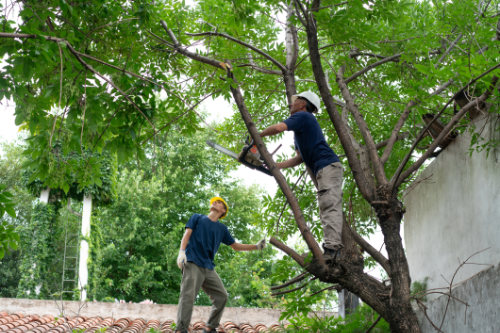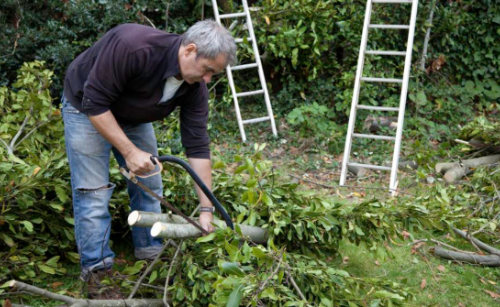Majestic old trees are beautiful, but they can also be dangerous. Falling trees and tree limbs cause millions of dollars in property damage to homes and vehicles each year. If a fallen tree is large enough, it can destroy an entire home. And, sadly, people have been paralyzed and killed by falling trees.
Some tree hazards are unavoidable, such as a healthy tree being uprooted during a tornado. But it’s your responsibility to keep an eye on the trees on your property and prune away diseased or dangerous branches. You should also have dead trees removed.
If your property is damaged due to neglected or poorly maintained trees, your insurance won’t protect you.
Home damage

Say a tree or tree branch on your property falls and hits your home or another insured structure, like a detached garage. If that tree was properly maintained, your standard homeowners insurance policy will cover any damage to the structure and its contents.
Similarly, if one of your properly maintained trees or tree branches damages your neighbor’s property, they will file a claim with their own insurance company.
If your neighbor neglects or does not properly maintain their tree and that tree damages your property, your insurance company may turn to your neighbor’s insurance company and try to collect from them. This is called subrogation. If the process is successful, you may get your deductible back.
During a hurricane or windstorm, trees and branches can travel considerable distances and cause significant damage to property. In most cases, insurance companies don’t spend a lot of time trying to figure out where the tree or branches originally came from. Property owners file claims with their own insurance companies.
Your insurance professional can explain whether your homeowners insurance policy includes coverage for fallen trees and the factors that influence coverage.
Vehicle damage
If a tree or branch smashes your vehicle and you’re the owner of both the fallen tree and the vehicle, your homeowners insurance policy likely won’t cover the damage to your car. But your auto policy will help pay to repair or replace your vehicle, if you have comprehensive coverage.
If the tree that fell on your car belongs to a neighbor, you’d probably still rely on the comprehensive coverage in your auto insurance policy. However, your neighbor’s homeowners insurance policy may help cover the damage if you don’t have comprehensive coverage on your vehicle.
Regardless of whose tree it is, you are generally responsible for the cost of removing it in this situation.
Tree and debris removal
If a tree hits your home or another insured structure, your homeowners policy will generally cover the cost of removing it. According to the Insurance Information Institute (III), homeowners insurance typically covers up to $500-$1,000 of the cost.
If the downed tree doesn’t land on an insured structure, you generally have to pay out of pocket to get it removed. However, III says some insurance companies may pay for the cost of removing the downed tree if it’s blocking a driveway or wheelchair ramp.

Lack of maintenance or negligence
To minimize the likelihood of tree damage, you must maintain your trees and properly prepare them for severe weather. Scheduling regular maintenance, inspections, pruning and trimming puts your trees in the best and healthiest condition possible. If a storm hits, your trees will be better able to withstand the extreme conditions.
But if a fallen tree was rotting and weak before the storm hit, your homeowners insurance likely won’t cover the damage to your home or any other structure.
Problems to watch for
If you see any of these issues with your trees, take corrective action or consult a tree care professional.
- Large cracks in tree trunks or limbs
- A dead tree or large dead branches
- A tree leaning significantly or otherwise appearing unstable
- Tree branches that are close to roofs or power lines (Never try to cut branches close to power lines yourself; leave that to a professional.)
- A tree that is decaying or hollowed out
- A tree that appears to have a systemic disease
Healthy trees lower your risk
Tree maintenance and removal can be expensive, but it’s still cheaper and safer than dealing with the fallout from a tree falling onto your house or car.
If you have questions about your auto or homeowner’s coverage for tree damage, contact your insurance professional.




Reliance Insurance proudly serves
Burnaby and the Vancouver area